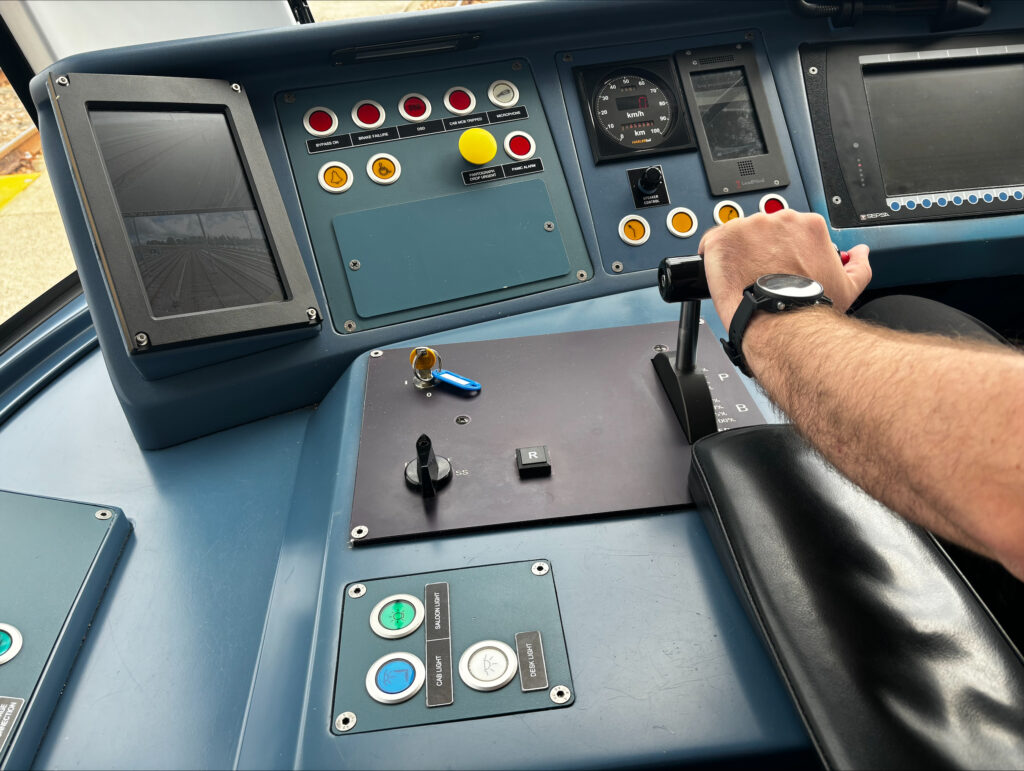A wearable device that’s been designed to detect the onset of fatigue in tram drivers has delivered remarkable results in independent testing commissioned by UKTram.
The organisation representing the light rail sector reports that the cutting-edge technology, developed by Integrated Human Factors, has an accuracy rate of greater than 98%.
Following extensive trials, prototype FOCUS+ devices have demonstrated their potential to reduce the risk of accidents by alerting control room operators of possible driver fatigue.
James Hammett, Managing Director of UK Tram, expressed his confidence in the technology.
“The independent testing report confirms the potential of FOCUS+,” he said. “In the future, it could play a key role in fatigue management system guidance, ensuring the well-being and safety of network employees and their passengers.”
Trials of the device have emerged from an initial Driver Innovation Safety Challenge (DISC), which involved City of Edinburgh Council, Transport for Edinburgh, Edinburgh Trams, and the Scotland Can Do Fund, working in partnership with UKTram and IHF Limited.
Neil Clark, CEO of IHF Limited, explained: “We were proud to have been selected to develop this cutting-edge wearable technology as part of the DISC project.
“FOCUS+ was three years in the making, having evolved using a combination of data analytics, biometrics and Human Factors-best practice approach to safety.
“It represents a significant leap forward in proactive fatigue monitoring and workplace safety. I am excited that we have had the system endorsed by the LRSSB and can now go on and fully commercialise the system. We have already had inquiries from as far away as Australia, with its versatility making it a consideration for many hazardous sectors.”
A pilot, which started in 2020, collected a large quantity of data from its volunteers that was used to refine the product and to ‘train’ the FOCUS+ algorithms through machine learning. FOCUS+ then underwent rigorous testing and user-centric design enhancements in collaboration with UK tram drivers, control room personnel, data scientists, and independent volunteers.
The Light Rail Safety and Standards Board has also played a key role in the project, assessing algorithms that underpin the system.
Carl Williams, the organisation’s Chief Executive, said: “To establish the 98 per cent accuracy of the algorithms used to assess the data is certainly a remarkable achievement.
“It clearly illustrates the potential of the devices and the underlying software to effectively detect driver fatigue in real-world situations and to further enhance light rail safety.”
The prototype devices feature a sophisticated array of five biometric sensors that continuously monitor the wearer’s vital signs, creating a personalised biometric profile over time. These sensors measure heart rate, blood oxygen saturation, skin temperature temperature, electrocardiogram, and galvanic skin response.
Such comprehensive data collection enables the device to detect deviations from the wearer’s baseline, providing real-time, colour-coded alerts for both the user and a control room or supervisor.
Neil Clark added: “The ground-breaking solution has the potential to revolutionise fatigue detection in safety-critical roles across various industries. While initially tested by light-rail drivers, FOCUS+ has cross-industry applicability and is suitable for anyone in safety-critical roles across various organisations and industrial sectors.”
FOCUS+ is set to reshape the landscape of safety-critical roles, offering a proactive approach to fatigue prevention and management. To learn more about FOCUS+ and its capabilities, click here.



